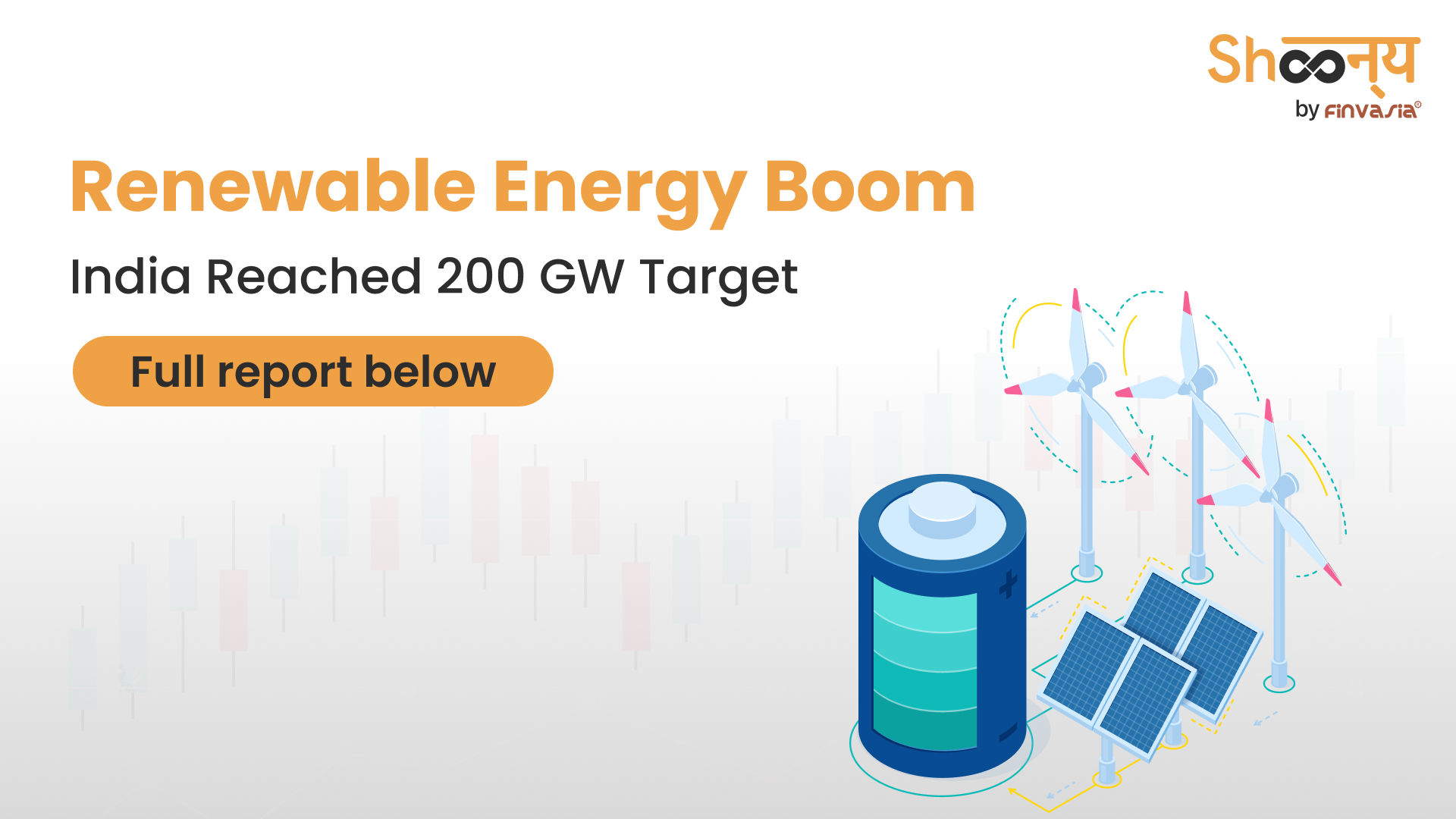Renewable Energy Boost – India’s capacity jumps to 200 GW

The drastic rise in global warming has been concerning the entire world. While 2024 is going to be the warmest year to date, India has achieved a milestone that has come as a sigh of relief to some extent. The country has taken its renewable energy capacity to 200 GW level, which makes the 500 GW target by 2030 more achievable now. This target was set in the COP26 which was held in the year 2021.
Achieving the Milestone
The achievement of this renewable energy goal marks the commitment of India to developing green energy for a sustainable future. In this year, the total renewable energy of the nation increased by 13.5%, from 179 GW in October 2023 to the current capacity of 203 GW.
India has achieved this with years of effort in harnessing renewable energy sources. The current capacity has been achieved with multiple solar parks that have been developed over the years, along with different wind energy farms, and hydroelectric projects. This has diversified the natural energy base of the country and enhanced the national energy security as well. However, the most important thing is the rising capacity of natural energy has been helping in reducing the dependency on fossil fuels.
Another crucial benefit of achieving this renewable energy goal has come in the form of employment generation. The sector has added 1.02 million jobs in 2024 to date.
Share in Total Energy Capacity
The current renewable energy capacity of 203 GW is 46% of the nation’s total installed energy capacity of 453 GW. This includes the three main renewable energy resources and also biomass energy and biogas energy as well.
Initiatives by Government
There is an abundance of government initiatives in the renewable energy space. Currently, the country is focused on the National Green Hydrogen Mission which is a significant part of green energy development. Apart from this, it has PM-KUSUM, PM Surya Ghar, and other PLI project schemes for developing solar PV modules for achieving the renewable energy goal.
What is ahead of us?
As per different research, it has been found that by 2035, global warming will rise to the point of irreversible damage. The average temperature of the Earth will rise to 2 degrees above the pre-industrial level in such a scenario. This will lead to a drastic rise in sea levels creating immense ecosystem imbalances. Thus this achievement of renewable energy capacity rising to 203 GW or 46% of the total installed energy capacity feels like a bit of relief and can help to hold on to the hope of a sustainable future.
Source: Pib.gov.in
______________________________________________________________________________________
Disclaimer: Investments in the securities market are subject to market risks; read all the related documents carefully before investing.








